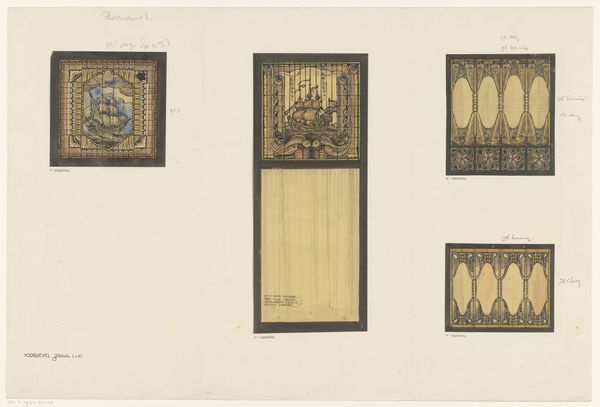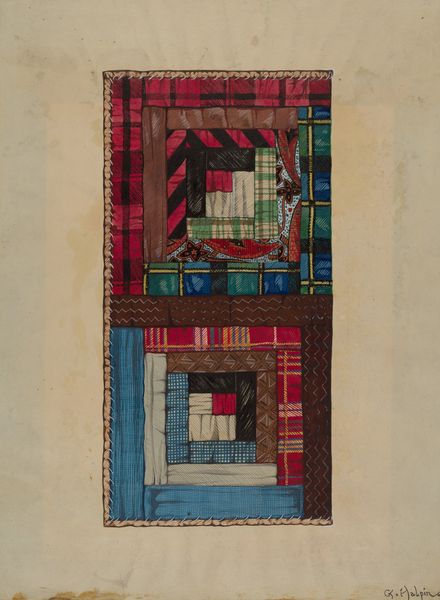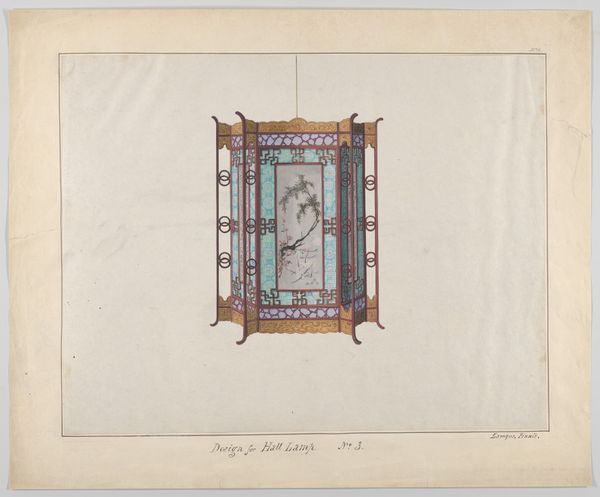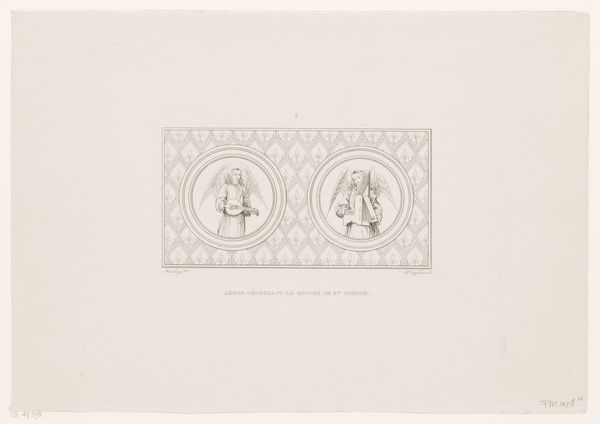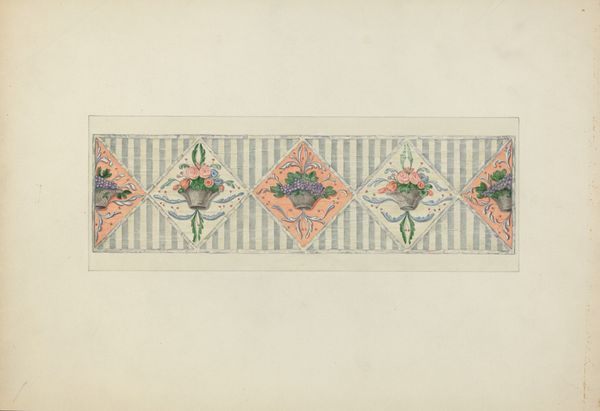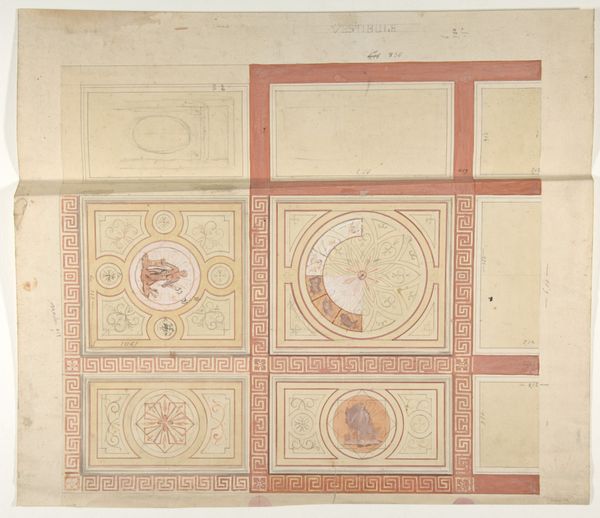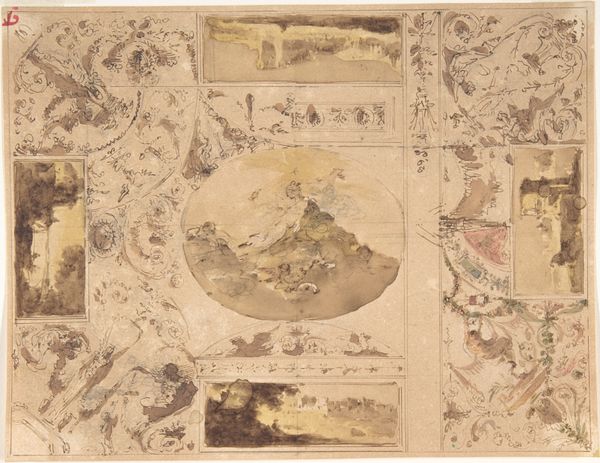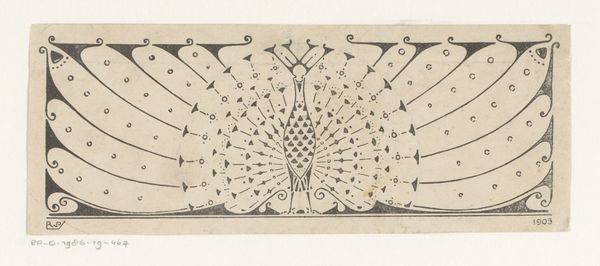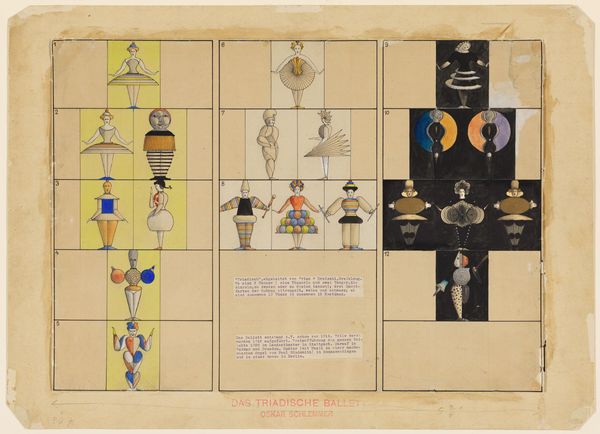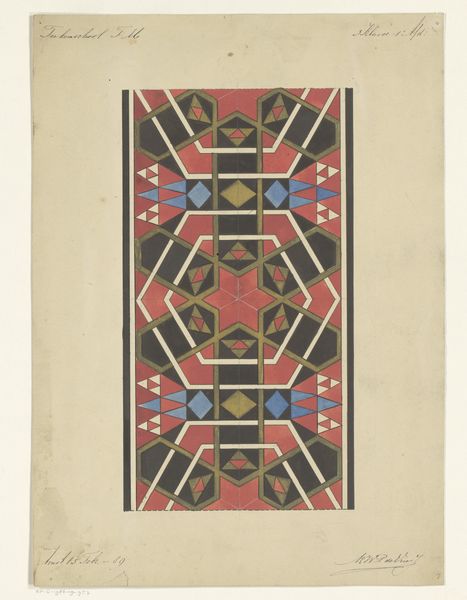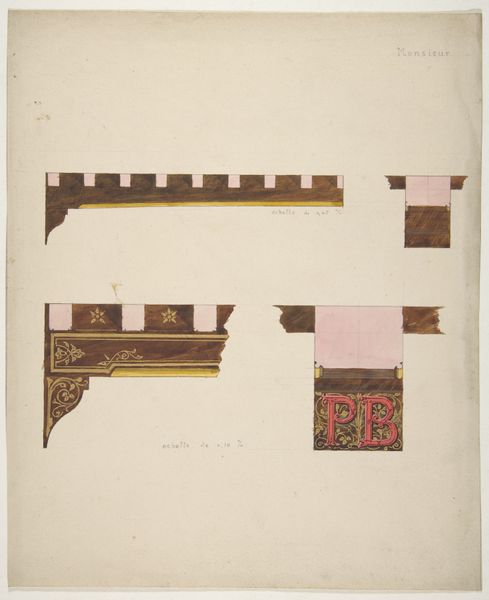
Design for Wall Decoration 1762 - 1853
0:00
0:00
drawing, ornament, print
#
photo of handprinted image
#
drawing
#
ornament
#
water colours
#
pastel soft colours
#
pottery
# print
#
collage layering style
#
historical fashion
#
ceramic
#
men
#
watercolour bleed
#
watercolour illustration
#
watercolor
Dimensions: 5 13/16 x 14 3/16 in. (14.7 x 36 cm.)
Copyright: Public Domain
Curator: Here we have "Design for Wall Decoration," a drawing by Pierre François Léonard Fontaine, dating roughly from 1762 to 1853. It resides here at the Metropolitan Museum of Art. Editor: Wow, it has a very subdued, almost calming effect at first glance, even though it seems to be trying to convey grandeur. Curator: Exactly! Fontaine was known for his contributions to the Empire style. It’s interesting to consider his interior design ideas weren't meant for everyone but catered to specific social spheres. Editor: Absolutely. Looking closer, the layering of watercolor with these little detailed prints, almost like collage work, is pretty ingenious. What was it like installing wallpapers back then? Curator: Well, consider the historical moment. It was a time of social and political change. Interior decor became a crucial signifier for class and aspiration. Someone acquiring designs like these wasn't just seeking aesthetics; they were curating an image, a statement of their social standing. Editor: That shade of brown… what’s that all about? I feel like I've seen it somewhere before. And also all of these pastel soft colors together gives the work a distinct vintage allure! Curator: You are definitely right; that's definitely not accidental. Back then, such choices often echoed neoclassical styles unearthed in archaeological discoveries. Patrons wanted walls that whispered stories of a rich past while celebrating current authority. Editor: Thinking about that historical framing, this wall decoration becomes less of just ornament, right? Instead, the design subtly alludes to legacies of imperial power? I find the use of what appears to be collage and layering unexpectedly modern—juxtaposing historical symbols. Curator: I agree entirely. Viewing “Design for Wall Decoration,” not only provides aesthetic pleasure. More importantly, this drawing reveals an insight into how interior space in itself once became the visual performance of authority! Editor: Indeed, I love how something seemingly as simple as interior design has such interwoven significance. What at first seems aesthetically charming reflects intentional articulation of power. Curator: Ultimately, isn't that precisely the ongoing challenge of design – weaving beauty with significance? Editor: It most certainly is! Thank you.
Comments
No comments
Be the first to comment and join the conversation on the ultimate creative platform.
